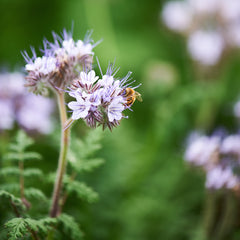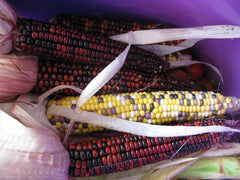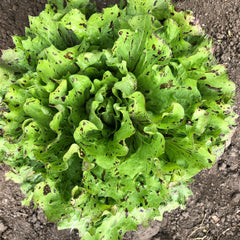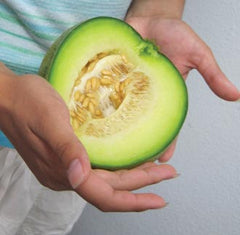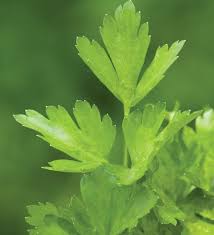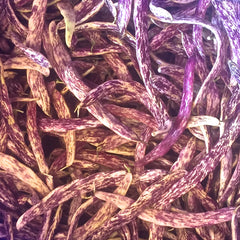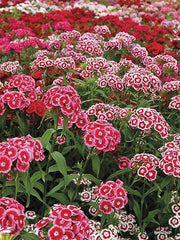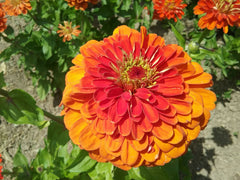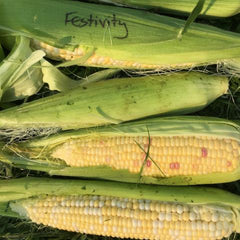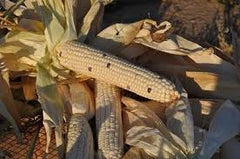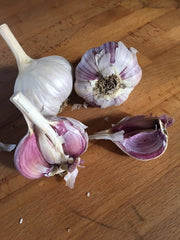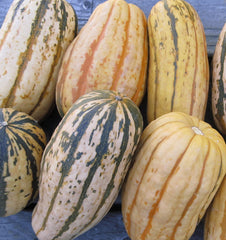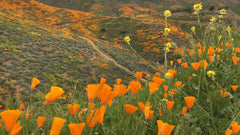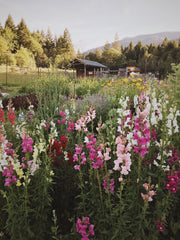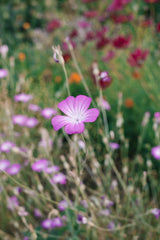Peach Melba nasturtium
peach-melba-nasturtium Peach Melba nasturtium Tropaeolum Majus
HOW TO GROW NASTURTIUM
Soak seeds in water for 12–24 hours before sowing. Direct sow outdoors two weeks before last frost or sow indoors 4–6 weeks before last frost then transplant out after last frost. Perennial climber up to 10’ but prefer to hang. Usually grown as an annual, frost tender and dislikes drought. Enjoys full sun to part shade. A good companion for many plants, keeping many harmful insects at bay and also improving the growth and flavor of neighboring crops including radishes, cabbages and fruit trees. Soil pH 6.1–7.8. Hardiness zones 11. Perennial.
Usual seed life 5 years.
Planting Depth 1/2"
Soil Temp. Germ. 60–65˚F
Days to Germ. 10–14
Plant Spacing 4-6”
Row Spacing 18-24”
Days To Maturity 60
Full Sun, Moist Well Drained Soil
Usual seed life 5 years.
Planting Depth 1/2"
Soil Temp. Germ. 60–65˚F
Days to Germ. 10–14
Plant Spacing 4-6”
Row Spacing 18-24”
Days To Maturity 60
Full Sun, Moist Well Drained Soil
- 25 Seeds$3.50
Loads of lovely, semi-double blossoms on compact, 8-16” tall plants. The edible, sweet and spicy flowers have cream colored petals with dark orange streaks in the center, creating a vibrant contrast. They are yummy raw in salads or as a side garnish to any dish. Plants produce well both in the garden and hanging bas...
Loads of lovely, semi-double blossoms on compact, 8-16” tall plants. The edible, sweet and spicy flowers have cream colored petals with dark orange streaks in the center, creating a vibrant contrast. They are yummy raw in salads or as a side garnish to any dish. Plants produce well both in the garden and hanging baskets. Pollinators love these nectar rich blossoms. Tags: Harvest: Early.
Nasturtium, literally "nose-twister" or "nose-tweaker", was named by Carl Linnaeus because they produce an oil that is similar to that of watercress (Nasturtium officinale). First introduced into Europe in the 18th century and was named Tropaeolum minus by the Swedish botanist Carl Linnaeus. He chose the genus name because the plant reminded him of an ancient custom. After victory in battle, the Romans set up a trophy pole called a tropaeum. On this the armor and weapons of the vanquished foe were hung. Linnaeus was reminded of this by the plant as the round leaves resembled shields and the flowers, blood-stained helmets. Nasturtiums were once known commonly as "Indian cresses" because they were introduced from the Americas, known popularly then as the Indies, and used like cress as salad ingredients. The 16th-century herbalist John Gerard called the plant "lark's heel" in his book Of the Historie of Plants.
Nasturtium, literally "nose-twister" or "nose-tweaker", was named by Carl Linnaeus because they produce an oil that is similar to that of watercress (Nasturtium officinale). First introduced into Europe in the 18th century and was named Tropaeolum minus by the Swedish botanist Carl Linnaeus. He chose the genus name because the plant reminded him of an ancient custom. After victory in battle, the Romans set up a trophy pole called a tropaeum. On this the armor and weapons of the vanquished foe were hung. Linnaeus was reminded of this by the plant as the round leaves resembled shields and the flowers, blood-stained helmets. Nasturtiums were once known commonly as "Indian cresses" because they were introduced from the Americas, known popularly then as the Indies, and used like cress as salad ingredients. The 16th-century herbalist John Gerard called the plant "lark's heel" in his book Of the Historie of Plants.
Learn More
Meet Your Farmer
We promote fair trade, organic practices and environmental responsibility throughout the Restoration Seeds supply chain. Below are the family farmers and seed suppliers who bring our open pollinated seeds to you.
Deep Harvest Farm
Certified Organic by WA Dept. of Ag.
Seed grower since 2010


Deep Harvest Farm is a certified-organic vegetable, seed and flower farm on Whidbey Island in NW Washington. Run by Annie Jesperson and Nathaniel Talbot, the farm focuses on year-round vegetable production, taking extra steps to use ecological soil management practices such as minimal tillage, the use of compost and cover cropping.
Reviews
